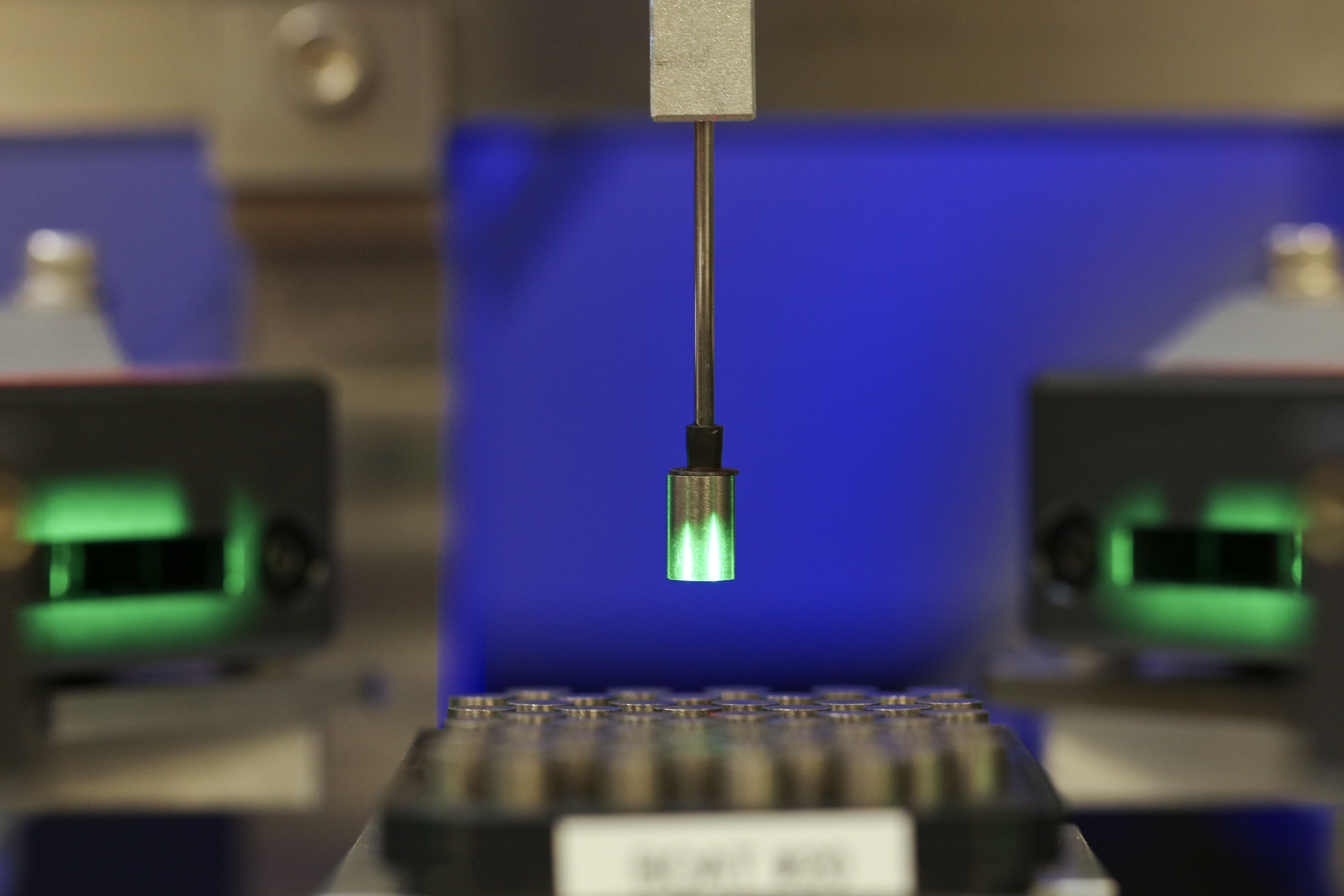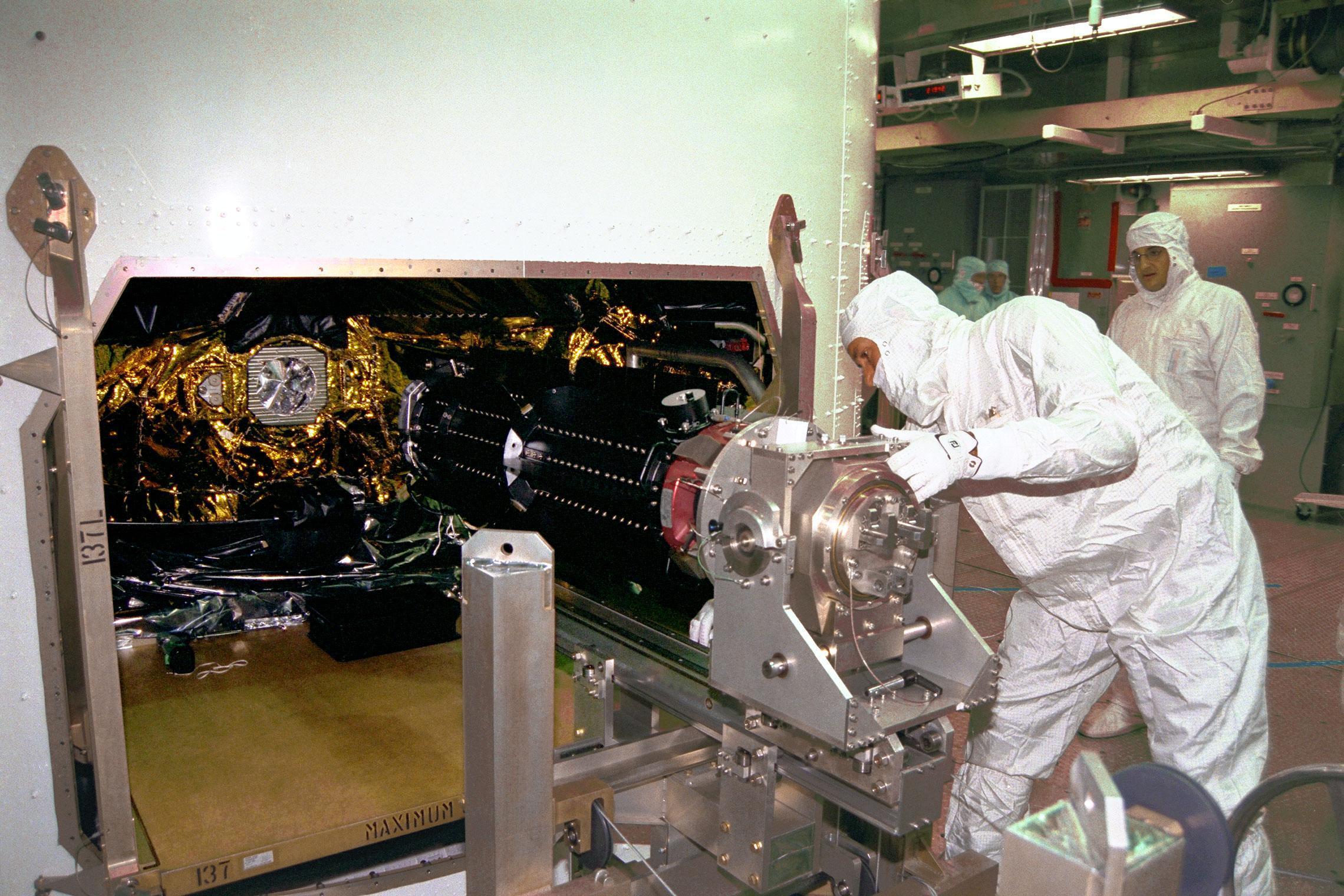
About Plutonium-238
Plutonium-238 is a special material that emits steady heat due to its natural radioactive decay. Several unique features of plutonium-238 have made it the material of choice to help produce electrical power for spacecraft.
missions powered by PLutonium-238
U.S. RPS-enabled Missions
NASA RPS-enabled Missions
The fuel in an RPS — short for radioisotope power systems — is plutonium oxide, a radioactive material that produces alpha particles. Alpha particles are a particular type of ionizing radiation that can be shielded by material as thin as a piece of paper. Plutonium-238 is not the type of plutonium used for nuclear weapons and would not work well as fuel in a nuclear reactor.
To be suitable for space missions, a radioisotope must meet all of the following criteria:
- Exist in an insoluble form and/or otherwise not be readily absorbed into the body in the unlikely event of a launch accident
- Exist in a form such that it presents no or minimal chemical toxicity when taken into the body
- Have relatively low neutron, beta and gamma radiation emissions, so as to not adversely affect spacecraft instruments or require excessively massive shielding
- Be stable at high temperatures, so its characteristics remain essentially unchanged over many years
- Have a long enough half-life (at least 15 to 100 years), so that it can generate for many years sufficient heat for transformation into electricity
- Have a high power density, so a small amount of it can generate a substantial amount of heat
The only radioisotope that has consistently met the basic criteria is plutonium-238, which has a half-life of 88 years, a high power density, and has proven to be a very dependable and safe heat source on more than two dozen U.S. space missions over the past 50 years.
In unlikely event of a mission accident, there is a potential for the release and dispersal of the fuel into the environment, and subsequent exposure to humans. Several layers of safety features designed into an RPS help minimize this potential. For example, the fuel is intentionally formulated and used in a ceramic form, similar to the material in a coffee mug. In this form, it primarily breaks into large pieces rather than being vaporized into fine particles, which can be a health hazard when inhaled. The ceramic form also prevents the material from being absorbed into the body if ingested.

Plutonium Production for RPS
After a gap of nearly 30 years, the United States restarted production of new plutonium oxide heat source material, which is the fuel used in RPS built by the Department of Energy to provide electricity and heat for NASA missions that explore some of the most extreme places in the solar system.
RPS convert heat from the natural radioactive decay of the isotope plutonium-238 (used in a ceramic form of plutonium oxide) into electrical power to operate the computers, science instruments, and other hardware aboard NASA missions such as the Perseverance rover on Mars and the New Horizons spacecraft currently exploring far beyond Pluto.
U.S. production of plutonium oxide for space exploration at the Department of Energy’s Savannah River Plant in South Carolina ceased in the late 1980s, and interim purchases of heat source material from Russia have ended.
Since 2011, Congress has provided funds to NASA to support the ability of the Department of Energy's Office of Nuclear Energy to resume U.S. domestic production of plutonium for civil space applications, using a series of specialized facilities, staff at the Oak Ridge National Laboratory (ORNL) and the Idaho National Laboratory (INL).
New plutonium-238 production is part of a broader infrastructure at the Department of Energy that provides radioisotope power systems to NASA for use in space missions. Plutonium oxide is produced at Oak Ridge National Laboratory and shipped to Los Alamos National Laboratory (LANL) where it is turned into heat source pellets, which are then shipped to the Idaho National Laboratory to be placed into safe, long-term storage awaiting fueling of future radioisotope power systems there.
